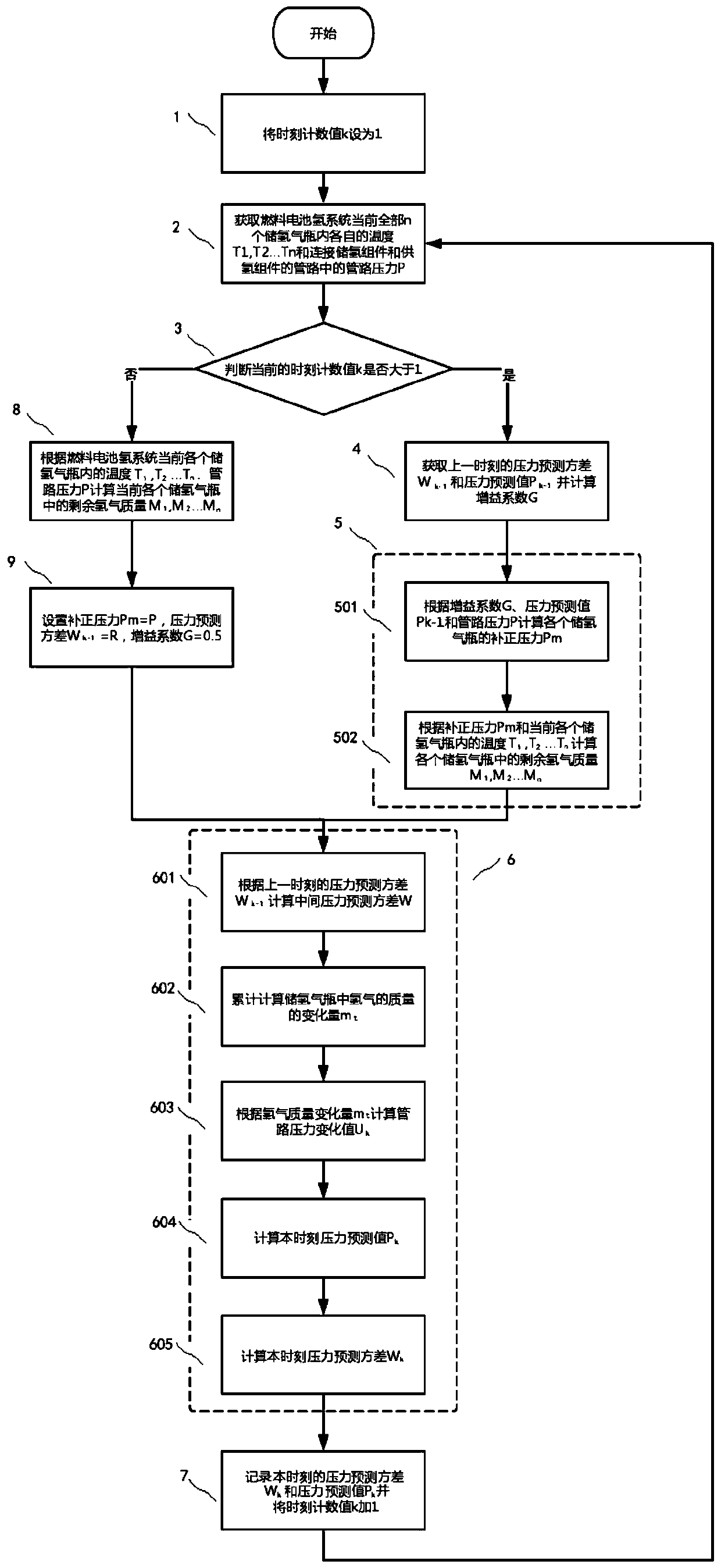Method for calculating residual hydrogen of fuel cell hydrogen system
A fuel cell and computing method technology, applied in the field of computing, can solve the problems of low pressure sensor accuracy, limiting the calculation accuracy of the remaining hydrogen mass, bad electromagnetic environment and noise, etc.
- Summary
- Abstract
- Description
- Claims
- Application Information
AI Technical Summary
Problems solved by technology
Method used
Image
Examples
Embodiment Construction
[0039] Figure 1-2 and the following description describe alternative embodiments of the invention to teach those skilled in the art how to make and reproduce the invention. In order to teach the technical solutions of the present invention, some conventional aspects have been simplified or omitted. Those skilled in the art should understand that modifications or substitutions from these embodiments will fall within the protection scope of the present invention. Those skilled in the art will appreciate that the features described below can be combined in various ways to form multiple variations of the invention. As such, the invention is not limited to the alternative embodiments described below, but only by the claims and their equivalents.
[0040] figure 1 A block diagram of a fuel cell hydrogen system according to one embodiment of the present invention is shown. Such as figure 1 As shown, the fuel cell hydrogen system includes a hydrogen supply assembly A, a hydrogen...
PUM
 Login to View More
Login to View More Abstract
Description
Claims
Application Information
 Login to View More
Login to View More - R&D
- Intellectual Property
- Life Sciences
- Materials
- Tech Scout
- Unparalleled Data Quality
- Higher Quality Content
- 60% Fewer Hallucinations
Browse by: Latest US Patents, China's latest patents, Technical Efficacy Thesaurus, Application Domain, Technology Topic, Popular Technical Reports.
© 2025 PatSnap. All rights reserved.Legal|Privacy policy|Modern Slavery Act Transparency Statement|Sitemap|About US| Contact US: help@patsnap.com


